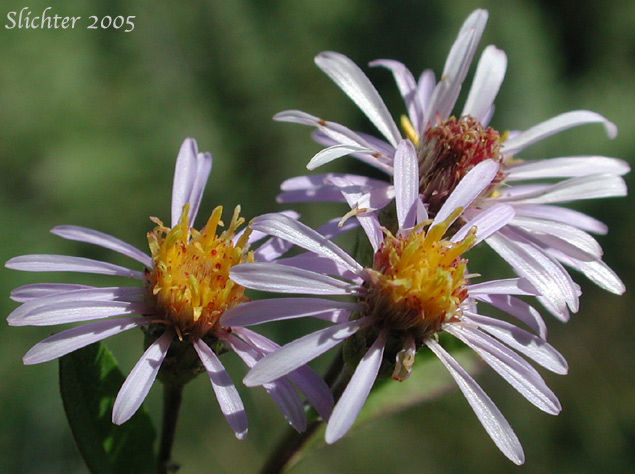
Rough-leaf aster is a perennial wildflower with erect stems from 15-60 cm high. The stems are hairy but not glandular. The lower leaves are obovate to oval in shape, the blade tapering to ciliate margined petioles. The leaves of mid-stem are narrowly oval, measuring from 4-12.5 cm long and 1-7 cm wide. The base of these leaves are sessile, and the tips are acute. The margins are toothed (except at the base) and the upper surface of the blades are smooth. The upper leaves are reduced to entire bracts.
The inflorescence is a flat or rounded cyme or cymose panicle. The heads are 1.5-2.5 cm wide and the stems below the heads are hairy. The involucre is 6-9 mm tall with the inner bracts narrow and ciliate margined and spreading tips which are greenish. The midrib of the bracts is keeled and the margins are purplish. There are 10-15 white to purple rays, each of which is 8-12 mm long. The disk corollas are 7-8 mm long.
Rough-leaf aster maybe found in dry, open woodlands.
Rough-leaf aster is found west of the Cascade summit from Washington south to central California. It is also found in the Ochoco Mts. of central Oregon.